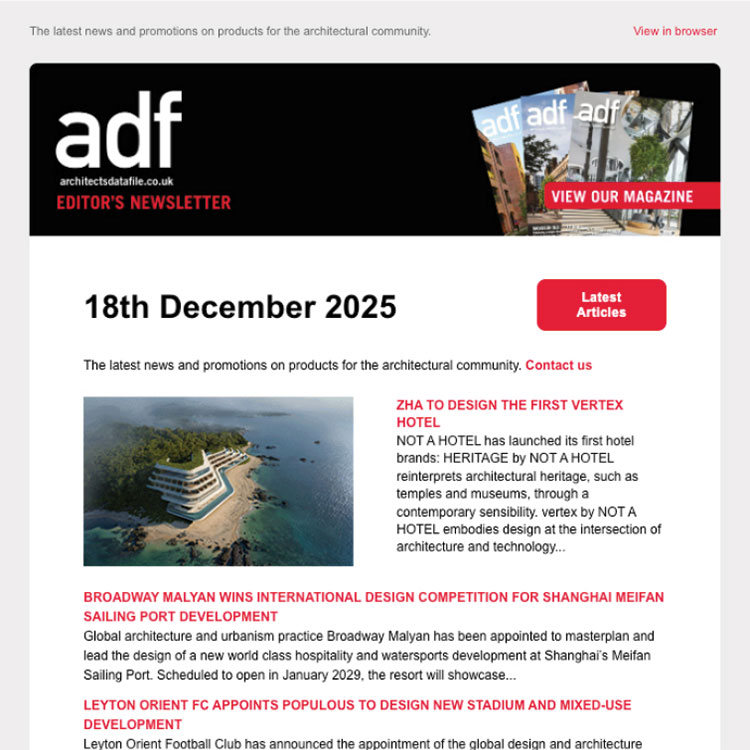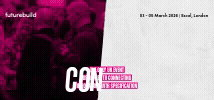-
Selected from over 400 entries, leading Finnish architecture practice Sigge Architects has designed the winning scheme for the world’s first Museum of History and the Future in Turku, Finland
-
The competition for the new museum, which is set to be completed in 2029 and is located in the city’s harbour, attracted over 400 entries from across the globe
-
Sigge Architects propose a design that sensitively interacts with its waterside location, creating a permeable site where the museum can act as a catalyst for the wider regeneration of the area
The city of Turku in southwest Finland has announced that Sigge Architects is the winner of an international architecture competition to design the world’s first Museum of History and the Future.
The idea to build a new museum in Turku was first proposed in 2011, when the city was the European Capital of Culture. The museum will be a highly interactive space, with a constantly evolving program of exhibitions showcasing the most creative and innovative scientific research and audio-visual techniques to explore the past and the future. Driven by Turku City Council, the organisers envisage the museum becoming a corner stone of cultural life in the region, with residents able to visit and see new exhibitions frequently throughout the year. The museum will also provide world class space to educate students and a diverse range of skilled jobs for the city.
An international jury of city leaders, trustees and experts appointed by the Finnish Architects’ Association SAFA selected the winner from over 400 anonymous entries. Sigge Architects, who since entering the competition have merged with another Finnish architecture practice to form Sarc + Sigge, has been awarded 70,000 euros with an additional 105,000 euros distributed to other shortlisted entrants.
Turku, which is Finland’s oldest city, is transforming its post-industrial riverside district with a series of projects that are placing music, art and museums at the centre of the city’s future as it prepares to celebrate its 800th birthday in 2029. This program of urban renewal is being coupled with an ambitious green agenda that will enable the city to become net zero by 2029 and carbon negative in the 2030s.
Minna Arve, Mayor of the City of Turku and Chair of the architecture competition jury, said:
“Over the last few years, Turku has built momentum and established a reputation as a thriving cultural city. Sigge’s design exemplifies the values of our city: experimental, sustainable, open and always looking to the future while cherishing the past.With a range of schemes nearing completion along the banks of river Aura, we’re excited for the future of Turku as European hub for art, music, museums and food.”
The competition was launched in September 2023, with entrants encouraged to submit ambitious sustainable designs for the new landmark that will act as an anchor for the wider redevelopment of the Linnanniemi district which connects the city to its famous archipelago of more than 40,000 islands.
The Museum of History and the Future is at the heart of the city’s plans for its 800th birthday in 2029. This 150,000 sq. ft site, located next to Turku Castle on the banks of the river Aura, will harness the latest experimental presentation methods and scientific research to present Turku’s past, present and future to an expected 200,000 visitors a year, alongside Turku residents.
The winning entry from Sarc Architects was chosen because of the firm’s sensitive design, which paid homage to Turku’s history while complementing the city’s bold redevelopment plans.
Once complete, the museum will act as catalyst for the wider transformation of the port area. Long-term, Turku wants this light-industrial zone to become the city’s first arts quarter. The winning design was chosen because it will deliver an open and inclusive museum that broadens the appeal of the waterfront and the surrounding area.
Central to the judges’ decision was how the design interacts with Turku Castle. Construction on the fortress started in 1280 and today it is the largest medieval building in Finland and a symbol of the city. The winning scheme manages the need for an innovative, bold new building in the area without diminishing Turku Castle’s role in the city.
The design was also notable for its exceptional sustainability credentials, both in terms of operational and embodied carbon. Between 1990 and 2020 carbon emissions in Turku halved, with the city on track to hit 75 percent reduction by 2025 and climate positive, meaning it will save more emissions than it generates, by the 2030s.
Construction on the museum is expected to start in 2027 and be completed by 2029, with the building opening to the public in 2030.
Pekka Mäki, project lead at architecture studio:
“It is a great joy and honour to win an international architectural competition in my hometown. The aim was to create a museum building that fits in scale and architecture with Turku Castle. The spaces are placed on one level, making the museum building and its surroundings function as a seamless whole.”


